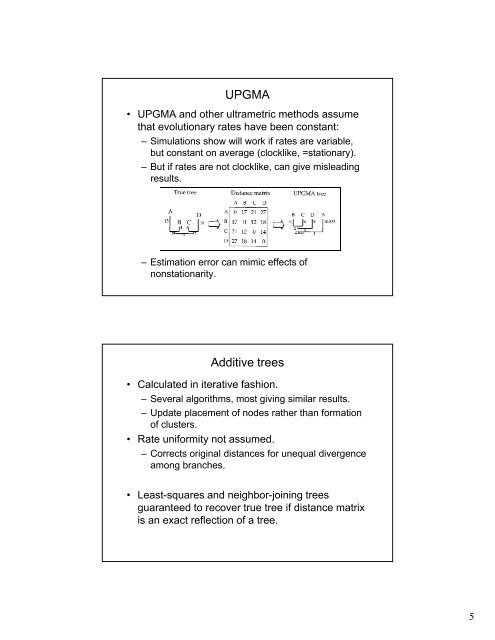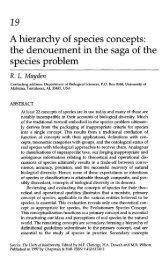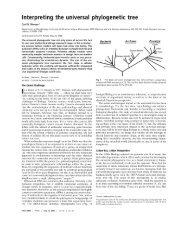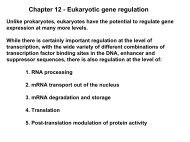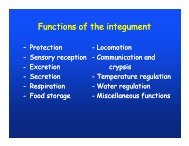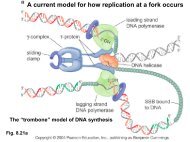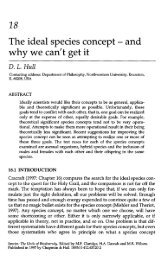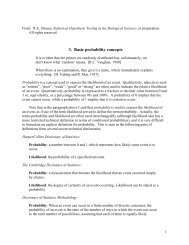Additive vs ultrametric: triangle inequality Additive vs ultrametric ...
Additive vs ultrametric: triangle inequality Additive vs ultrametric ...
Additive vs ultrametric: triangle inequality Additive vs ultrametric ...
Create successful ePaper yourself
Turn your PDF publications into a flip-book with our unique Google optimized e-Paper software.
UPGMA<br />
• UPGMA and other <strong>ultrametric</strong> methods assume<br />
that evolutionary rates have been constant:<br />
– Simulations show will work if rates are variable,<br />
but constant t on average (clocklike, =stationary).<br />
ti – But if rates are not clocklike, can give misleading<br />
results.<br />
– Estimation error can mimic effects of<br />
nonstationarity.<br />
<strong>Additive</strong> trees<br />
• Calculated in iterative fashion.<br />
– Several algorithms, most giving similar results.<br />
– Update placement of nodes rather than formation<br />
of clusters.<br />
• Rate uniformity not assumed.<br />
– Corrects original distances for unequal divergence<br />
among branches.<br />
• Least-squares and neighbor-joining trees<br />
guaranteed to recover true tree if distance matrix<br />
is an exact reflection of a tree.<br />
5


